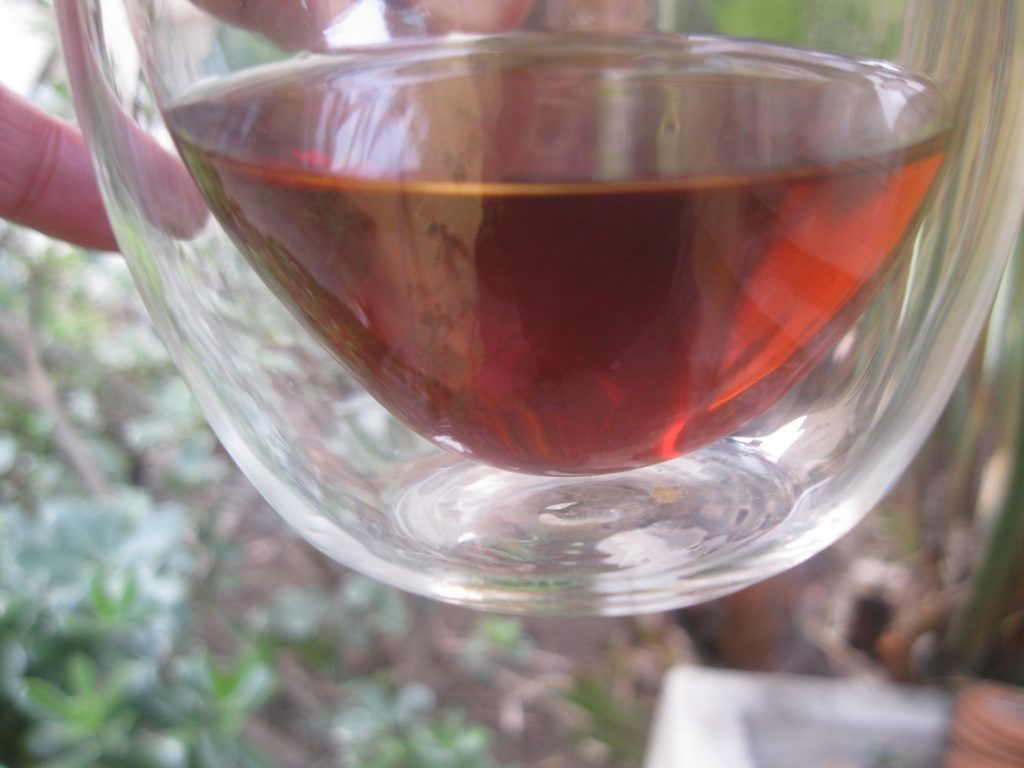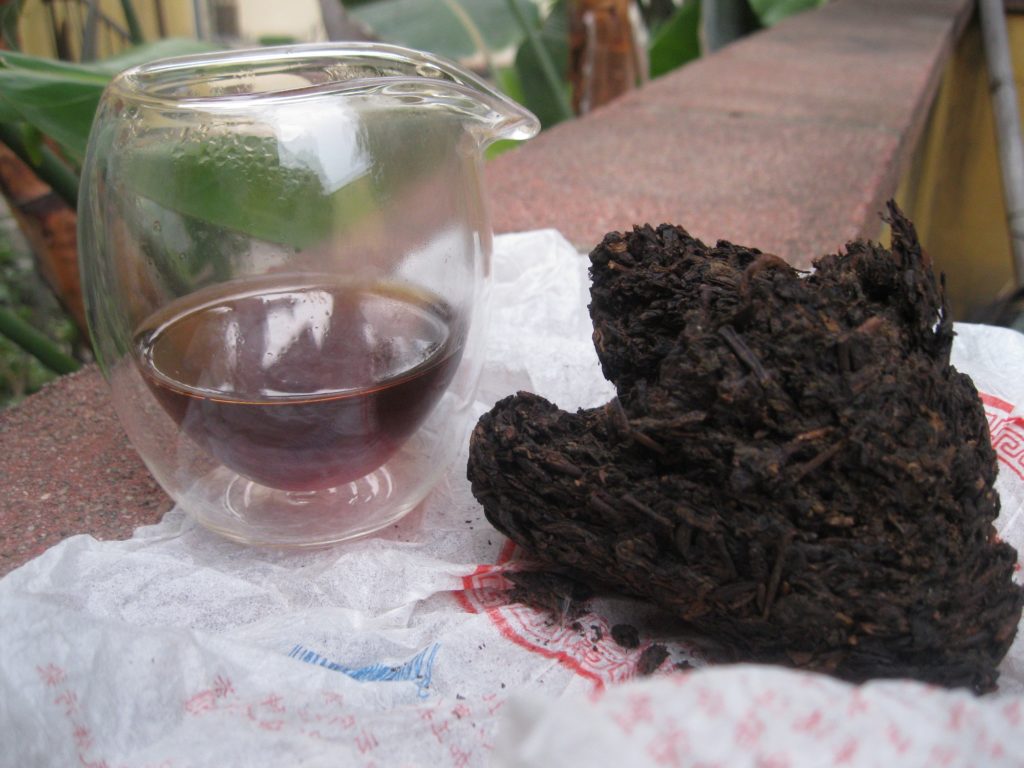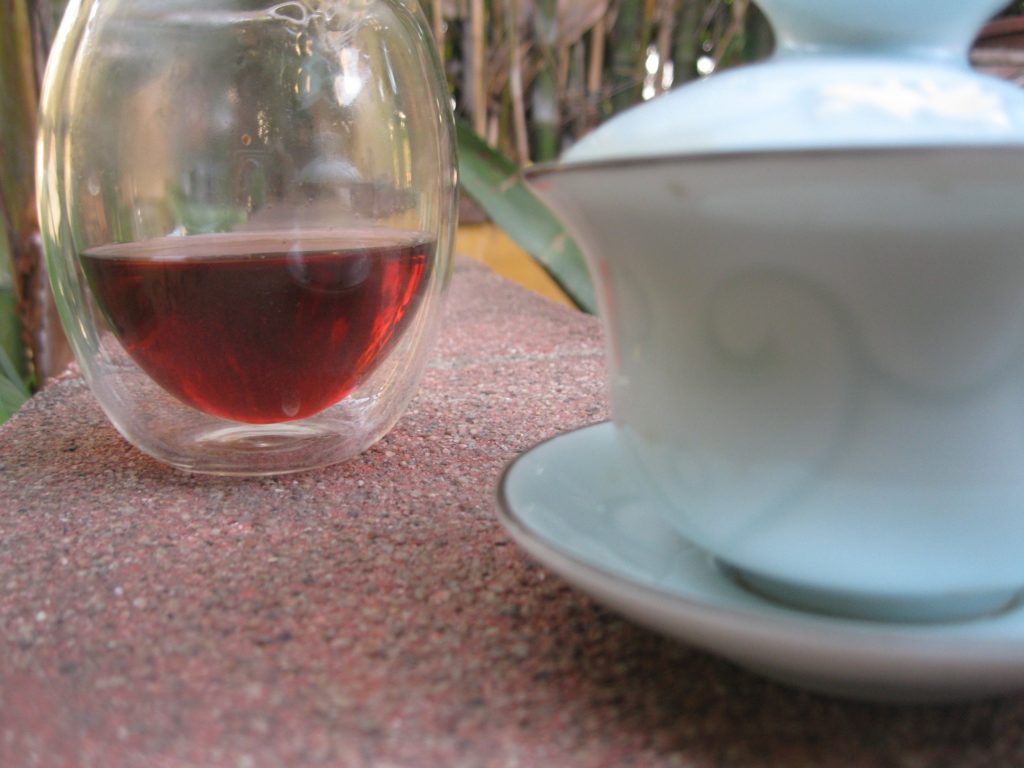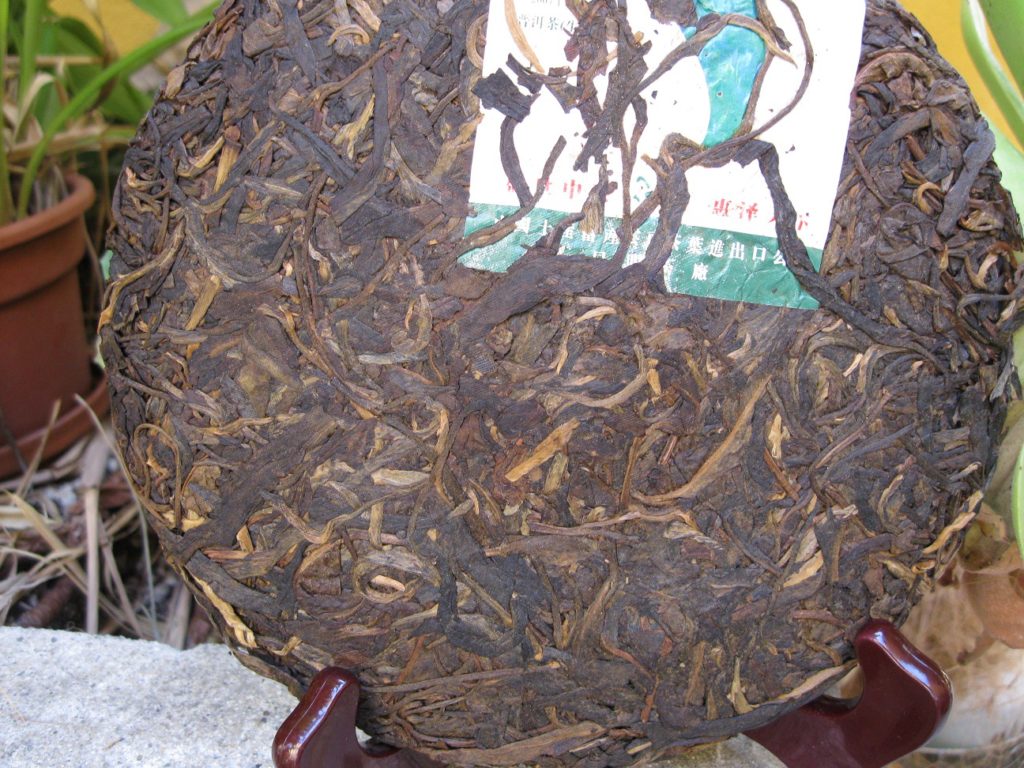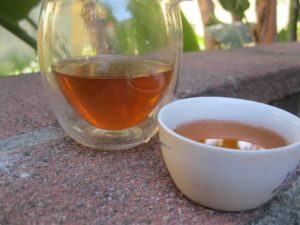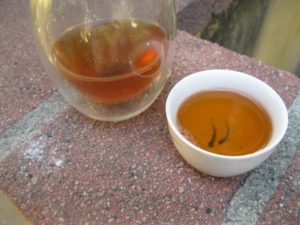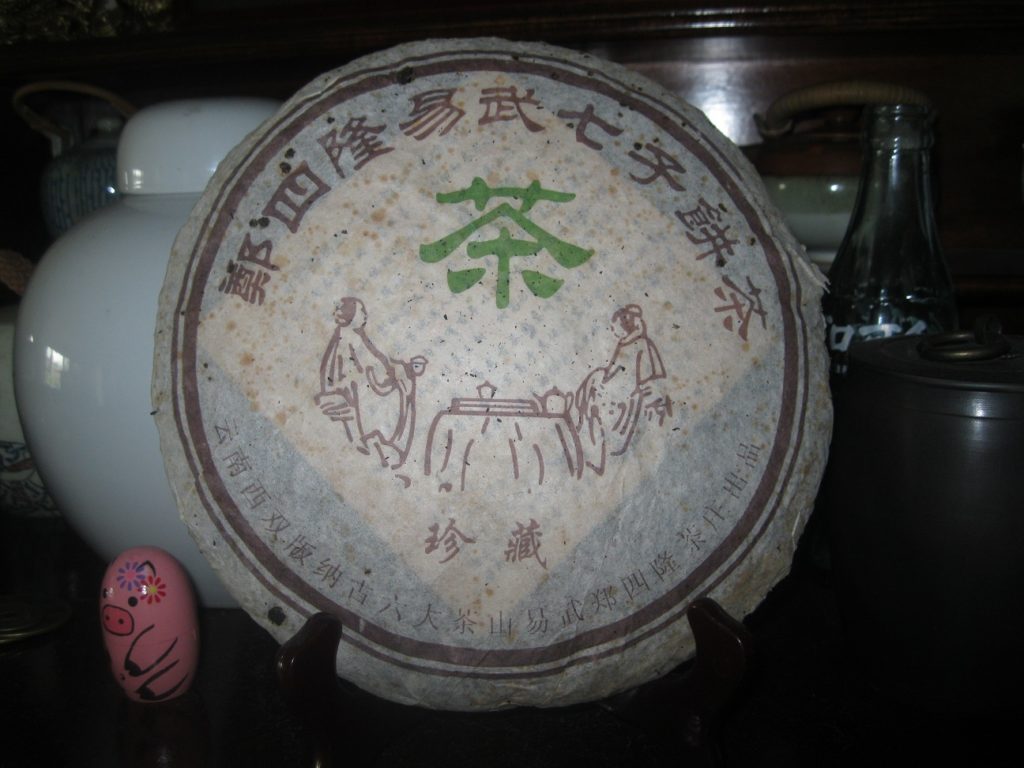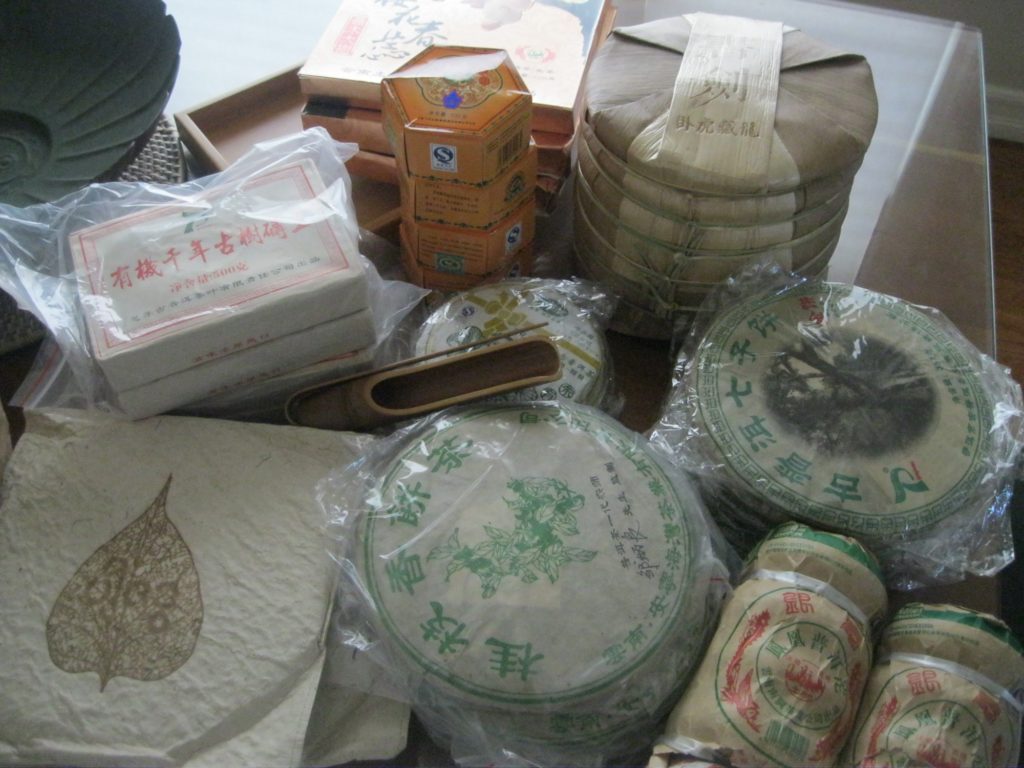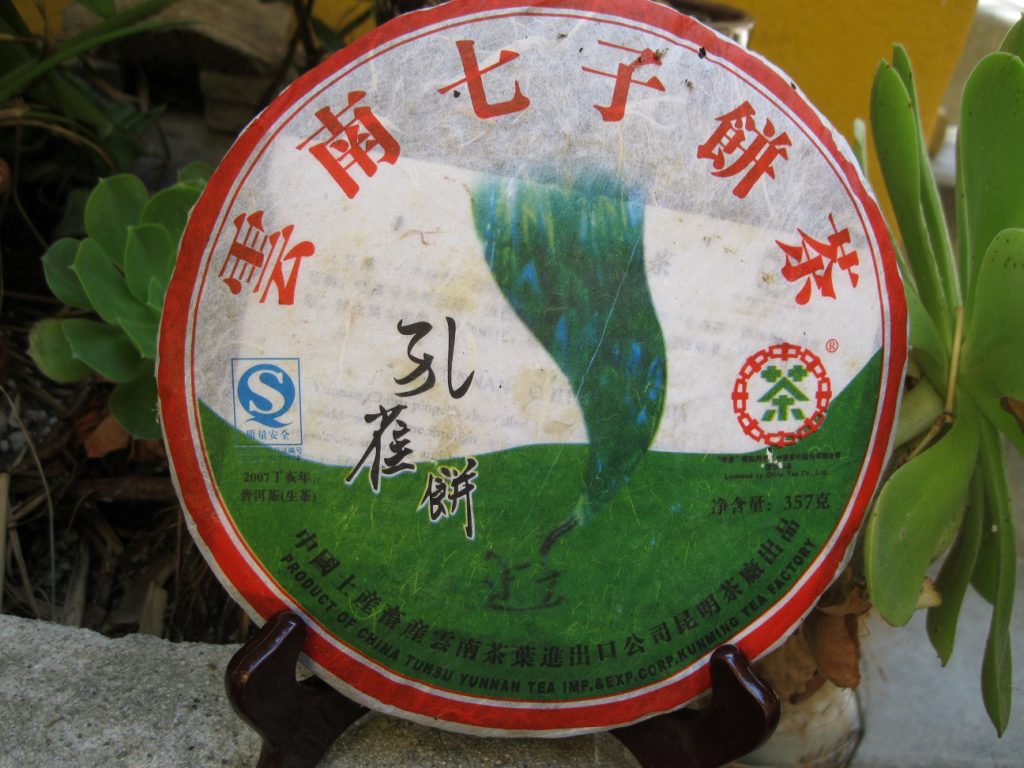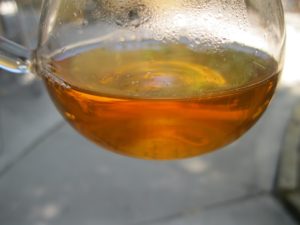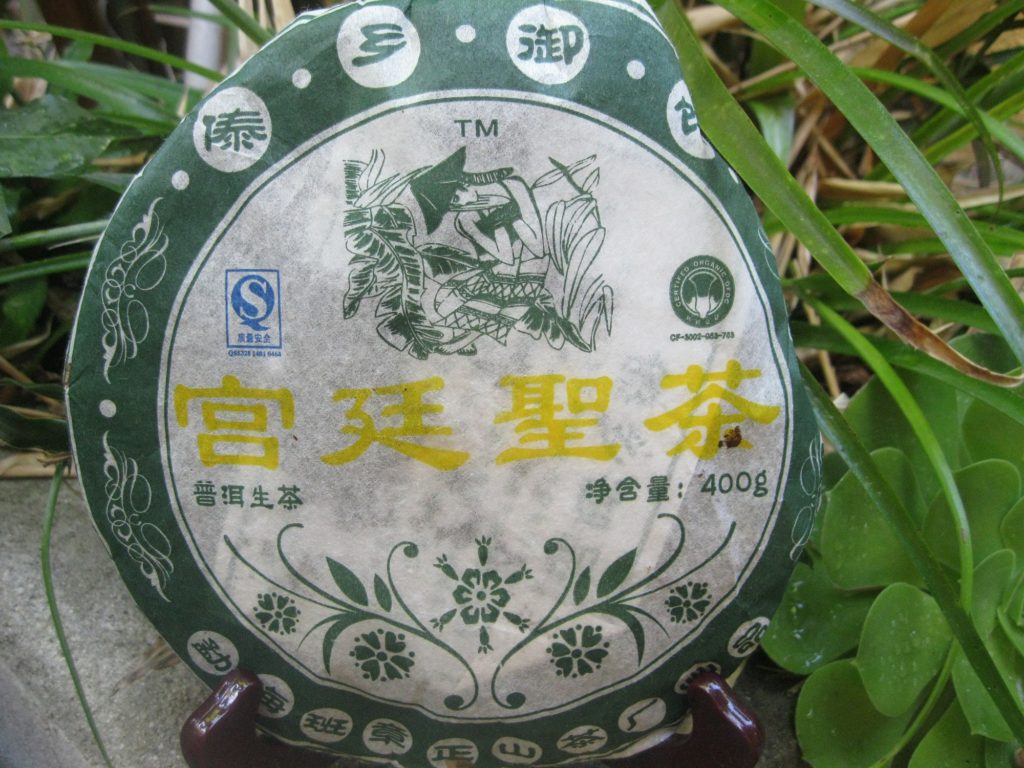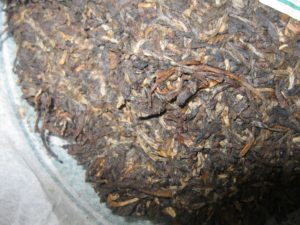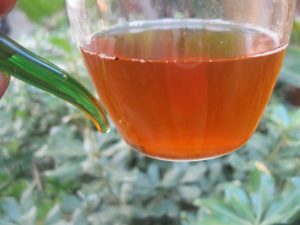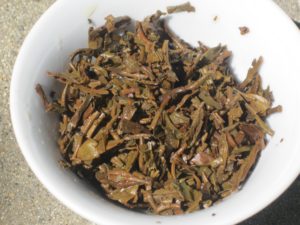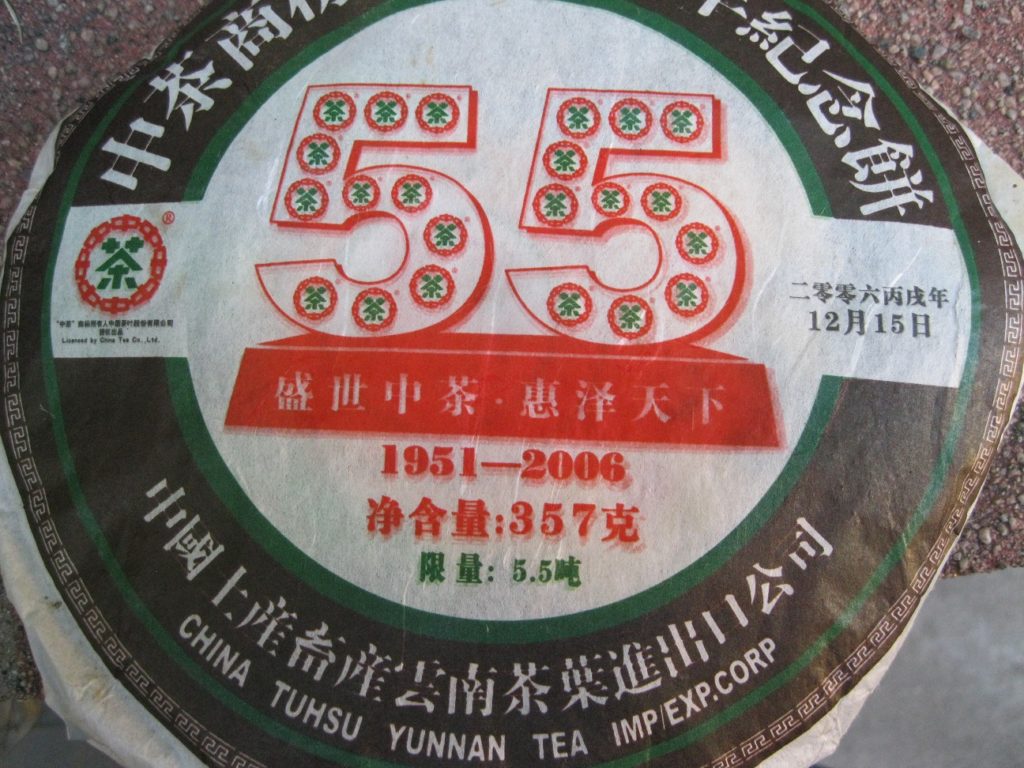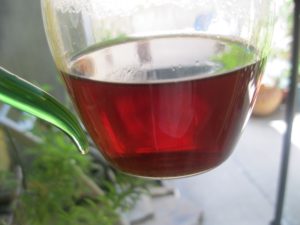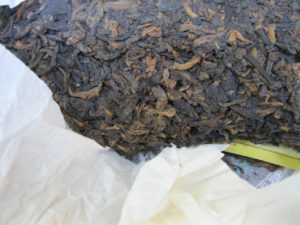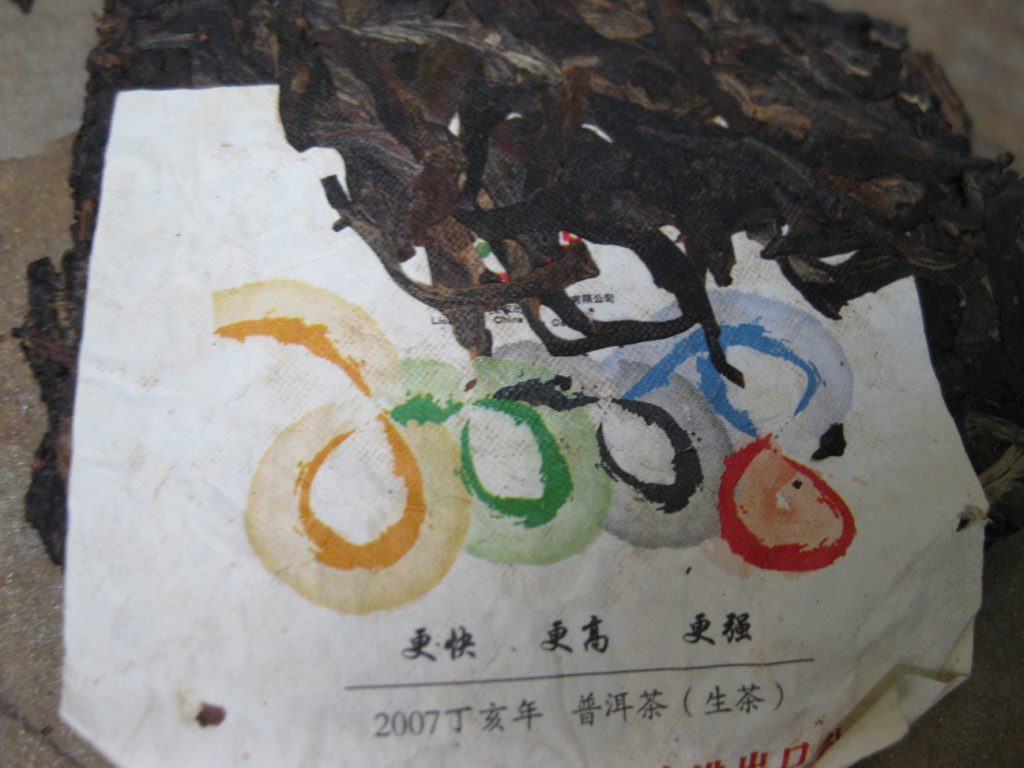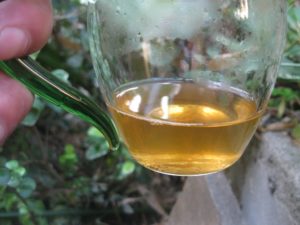Riper Puerh Gaiwan Challenge: Day III
For the Ripe Puerh Gaiwan Challenge: Day III I chose the ’06 Black Brew Tuo. I had it with a patient. We both found it dreadful. The taste was flat and gave the impression of puerh that had been stored in conditions that were too dry. We only got through two infusions before moving on to some raw puerh. At the very end of the second I brought out the clay cups and that made a positive difference. Several hours later, I decided to give it another try and it was much improved. The brew had depth and sweetness, more closely resembling its traits when brewed in clay. The aftertaste didn’t last so long.

